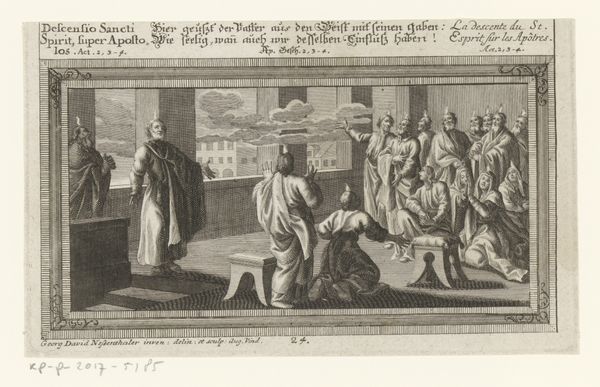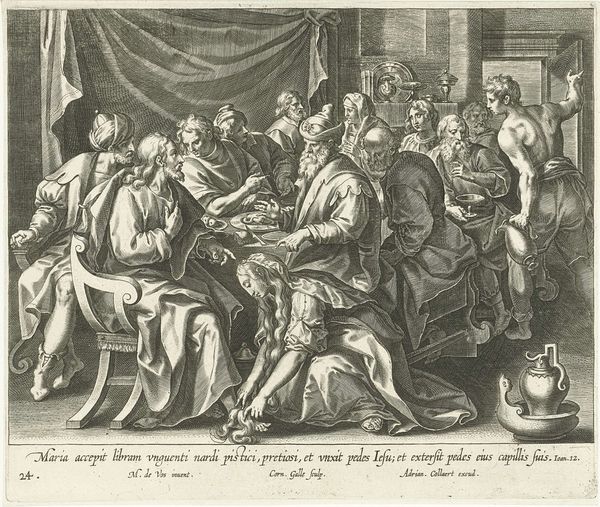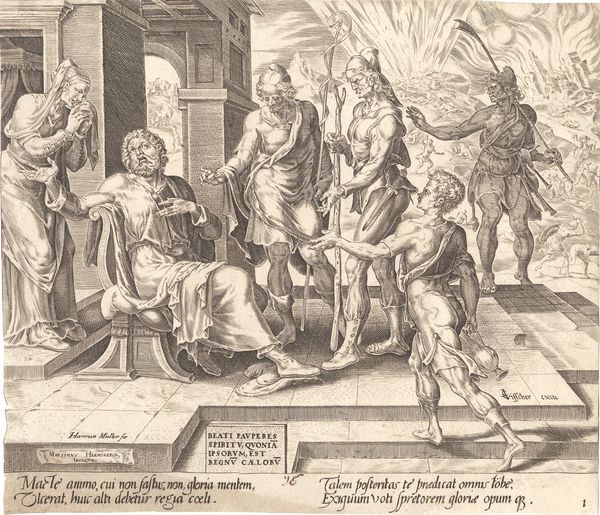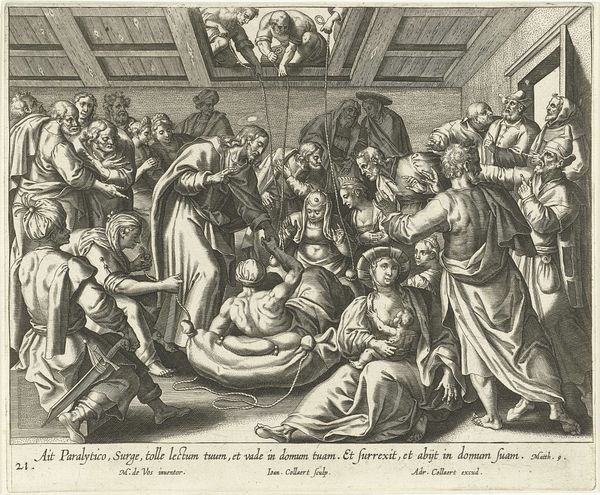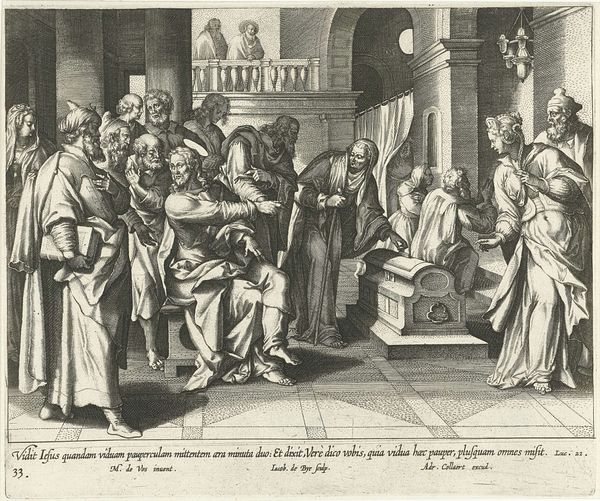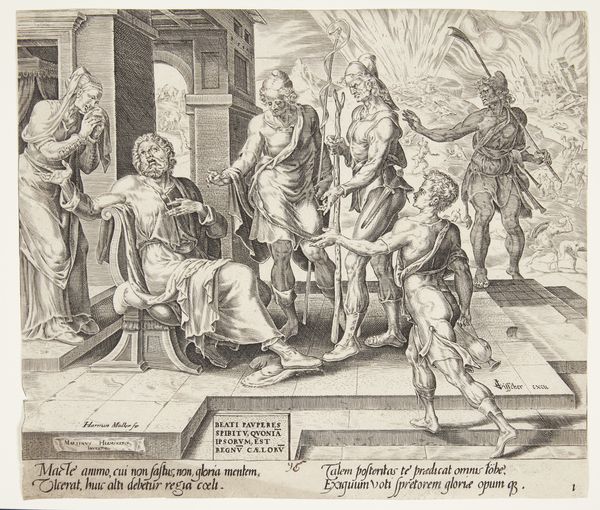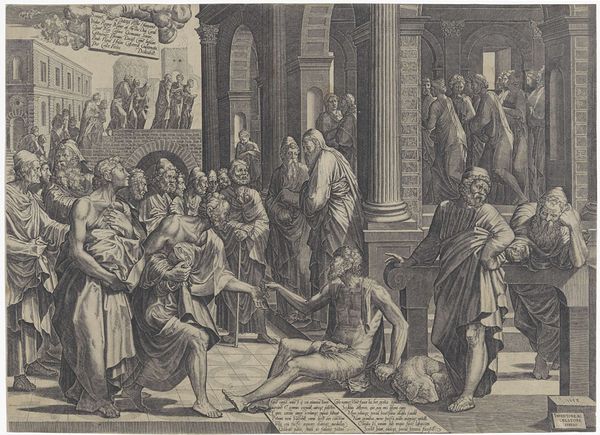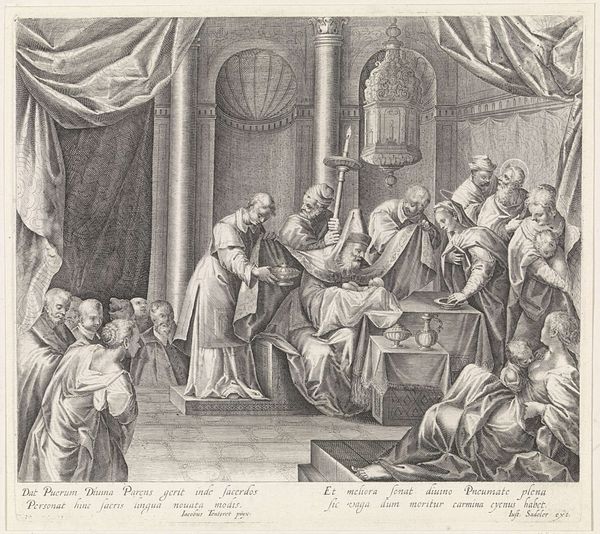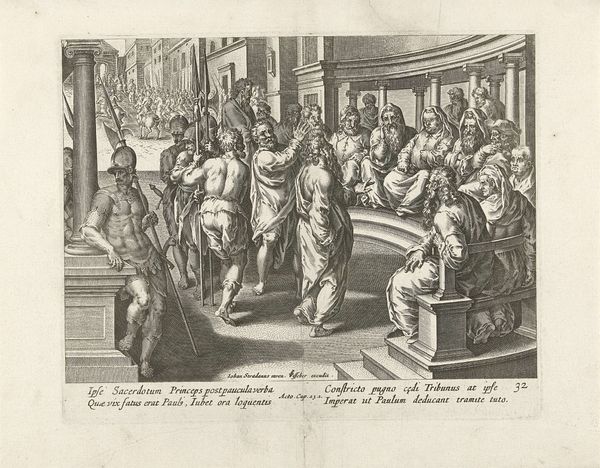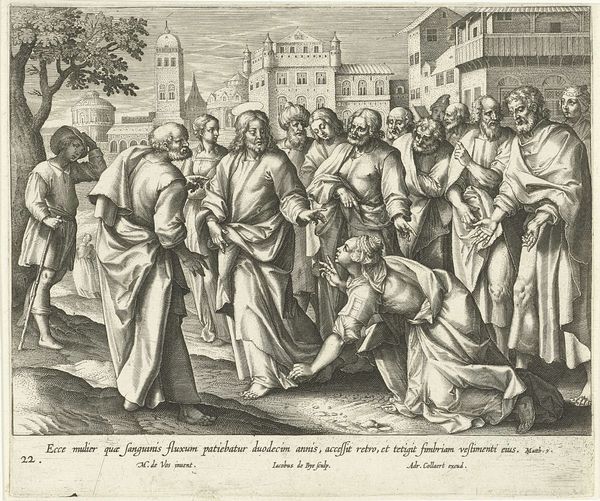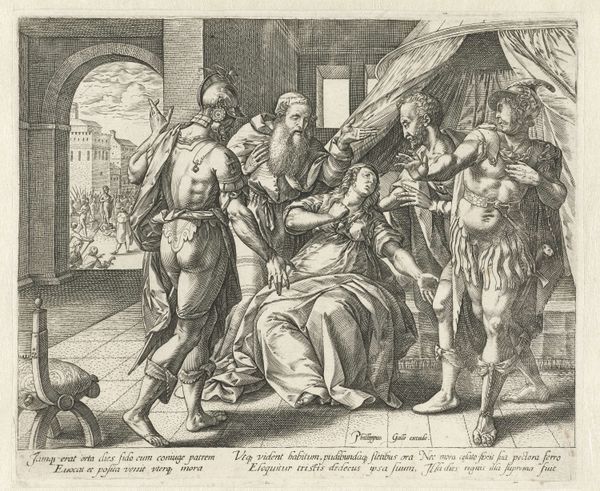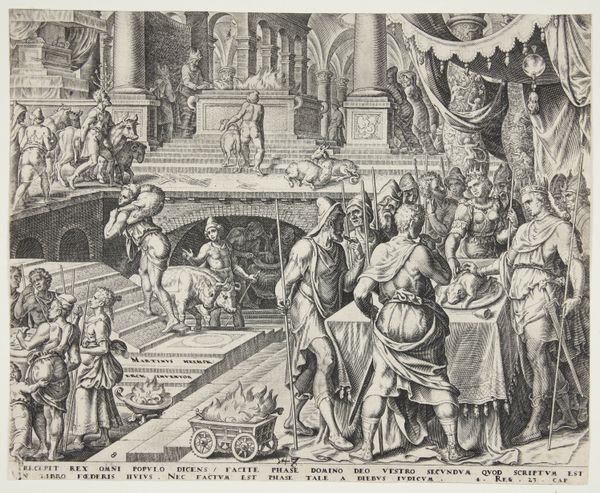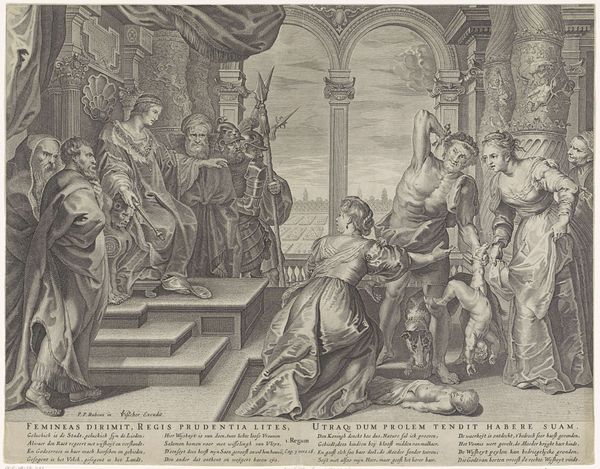
print, engraving
# print
#
mannerism
#
figuration
#
history-painting
#
engraving
Dimensions: height 198 mm, width 250 mm
Copyright: Rijks Museum: Open Domain
Curator: The Rijksmuseum holds this print by Theodoor Galle, "Susanna and the Elders: the Eighth Commandment," dating from the late 1580s. It’s a Mannerist engraving. What jumps out at you? Editor: Whoa, dense! It feels packed, doesn't it? So many tiny figures, like ants at a picnic. A little chaotic, a bit theatrical maybe? It almost makes me claustrophobic. Curator: It's worth considering the historical context here. Galle, drawing from the Book of Daniel, visualizes a stark power imbalance and betrayal of justice. Susanna is falsely accused of adultery by the elders. This depiction reinforces societal structures where women’s bodies are battlegrounds of patriarchal control. Editor: Oh, I get it. Susanna looks so…cornered. Everyone is surrounding her! You are right. The male gaze is super strong here, and there's so much tension and vulnerability, and I hadn't fully realized the accusation underlying the imagery. Still feels overwhelming visually though. Curator: Consider how Galle utilizes the engraving medium to emphasize moral clarity and legal righteousness through linear precision and contrasting values. It aims to underscore the story’s didactic intent – a visual sermon about integrity versus corruption within societal power structures. Editor: Even the dog looks worried! And look at those expressions in the background. But visually, Galle crams it all in—the trial, the accusers, the crowd of onlookers…Did prints like this play a specific role? Curator: Yes. These prints circulated widely, reinforcing legal and moral arguments. This composition prompts crucial questions: Whose stories get told? How does art influence understandings of justice and moral law? Editor: It's unsettling how timely that feels! Even with all that fine detail, or maybe because of it, you feel the injustice acutely. Art really can speak across the ages. Curator: Exactly. This piece underscores how artistic representation shapes cultural narratives about morality, justice, and the enduring struggle against false accusations, resonating with debates in current society.
Comments
No comments
Be the first to comment and join the conversation on the ultimate creative platform.
